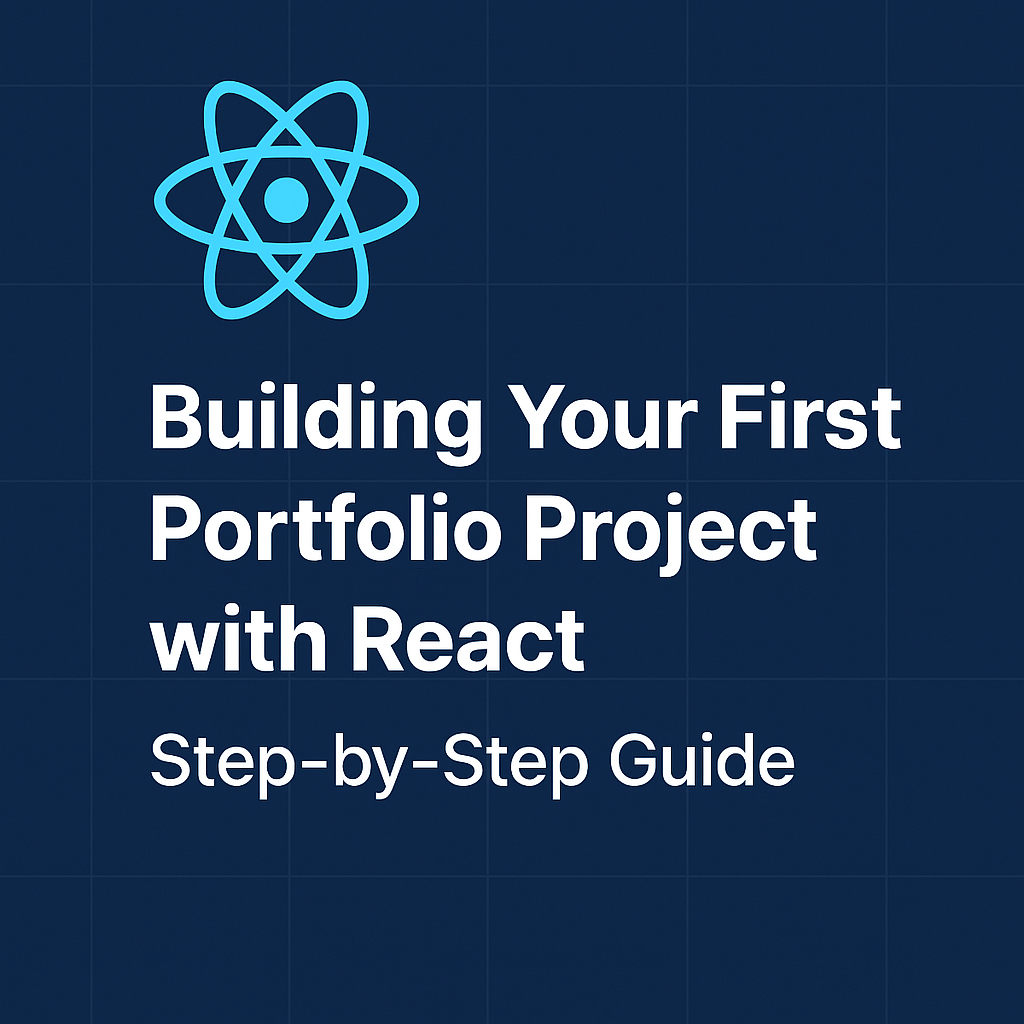Introduction
Building Your First Portfolio Project with React: Step-by-Step Guide. In today’s web development world, having a solid portfolio is one of the best ways to showcase your skills and attract potential employers or freelance clients. If you’re new to React or just starting your development journey, building a simple yet effective portfolio project using React can be a game-changer. In this guide, we’ll walk you through the process of creating your first React portfolio project step-by-step in 2025.
Table of Contents
Why Choose React for Your Portfolio?
React remains one of the most popular JavaScript libraries for building dynamic, component-based user interfaces. With its reusable components, active community, and integration with modern toolsets, React is ideal for portfolio projects that demonstrate your skills and understanding of real-world development.
Key Benefits:
- Modular architecture using components
- Reusable code and better scalability
- Seamless integration with APIs and backend services
- Strong community and learning resources
Step 1: Set Up Your Development Environment
Before jumping into the code, ensure your system is ready for React development:
Tools Needed:
- Node.js and npm (https://nodejs.org/)
- VS Code or any modern code editor
- Git for version control
- Browser (preferably Chrome or Firefox)
Run the following command to set up a new React project using Vite (for faster development):
npm create vite@latest react-portfolio -- --template react
cd react-portfolio
npm install
npm run dev
Vite is a modern build tool that offers faster startup and hot-reload than traditional tools like Create React App.
Step 2: Project Planning
Outline the basic sections of your portfolio website. A good React portfolio should include:
- Home page with a brief introduction
- About Me section highlighting your background and interests
- Projects showcase with descriptions, images, and links
- Skills or tech stack section
- Contact form or links to social profiles
Step 3: Structuring Your React App
Structure your project into reusable components. A sample structure could be:
src/
|-- components/
| |-- Header.jsx
| |-- Footer.jsx
| |-- ProjectCard.jsx
|
|-- pages/
| |-- Home.jsx
| |-- About.jsx
| |-- Projects.jsx
| |-- Contact.jsx
|
|-- App.jsx
|-- main.jsx
Example: Header Component
import React from 'react';
export default function Header() {
return (
<header>
<h1>My React Portfolio</h1>
<nav>
<a href="#about">About</a>
<a href="#projects">Projects</a>
<a href="#contact">Contact</a>
</nav>
</header>
);
}
Step 4: Adding Projects Dynamically
Instead of hardcoding projects, create a projects.js data file and map over it in your Projects page.
export const projects = [
{
title: "Weather App",
description: "A React app that fetches weather data from OpenWeather API.",
link: "https://github.com/yourname/weather-app"
},
// more projects...
];
In Projects.jsx:
import { projects } from '../data/projects';
function Projects() {
return (
<section id="projects">
{projects.map((project, index) => (
<div key={index} className="project-card">
<h3>{project.title}</h3>
<p>{project.description}</p>
<a href={project.link} target="_blank">View Code</a>
</div>
))}
</section>
);
}
Step 5: Styling Your Portfolio
You can style your app using:
- CSS Modules or Tailwind CSS
- Styled Components (https://styled-components.com/)
- Or traditional CSS files
Example with Tailwind CSS:
npm install -D tailwindcss
npx tailwindcss init
Then add Tailwind classes to your JSX:
<h1 className="text-3xl font-bold text-center">Welcome to My Portfolio</h1>
Step 6: Make It Responsive
Ensure your portfolio looks great on all devices:
- Use CSS Flexbox/Grid
- Add media queries or responsive utility classes (if using Tailwind)
- Test on different screen sizes
Step 7: Add Routing with React Router
To navigate between pages, install React Router:
npm install react-router-dom
Example setup in App.jsx:
import { BrowserRouter, Routes, Route } from 'react-router-dom';
import Home from './pages/Home';
import About from './pages/About';
import Projects from './pages/Projects';
import Contact from './pages/Contact';
function App() {
return (
<BrowserRouter>
<Routes>
<Route path="/" element={<Home />} />
<Route path="/about" element={<About />} />
<Route path="/projects" element={<Projects />} />
<Route path="/contact" element={<Contact />} />
</Routes>
</BrowserRouter>
);
}
Step 8: Add Contact Form
Include a simple form and use services like Formspree or EmailJS for email submissions.
Step 9: Deploy Your Portfolio
Use services like:
- Netlify (https://www.netlify.com/)
- Vercel (https://vercel.com/)
- GitHub Pages (https://pages.github.com/)
Push your code to GitHub and connect it with your hosting service.
Conclusion
Building your first React portfolio project is not just about writing code — it’s about telling your story as a developer. This project becomes a reflection of your abilities, problem-solving skills, and creativity. In 2025, with so many developers out there, a well-designed and functional portfolio will help you stand out.
Useful Links
Find more React content at: https://allinsightlab.com/category/software-development

